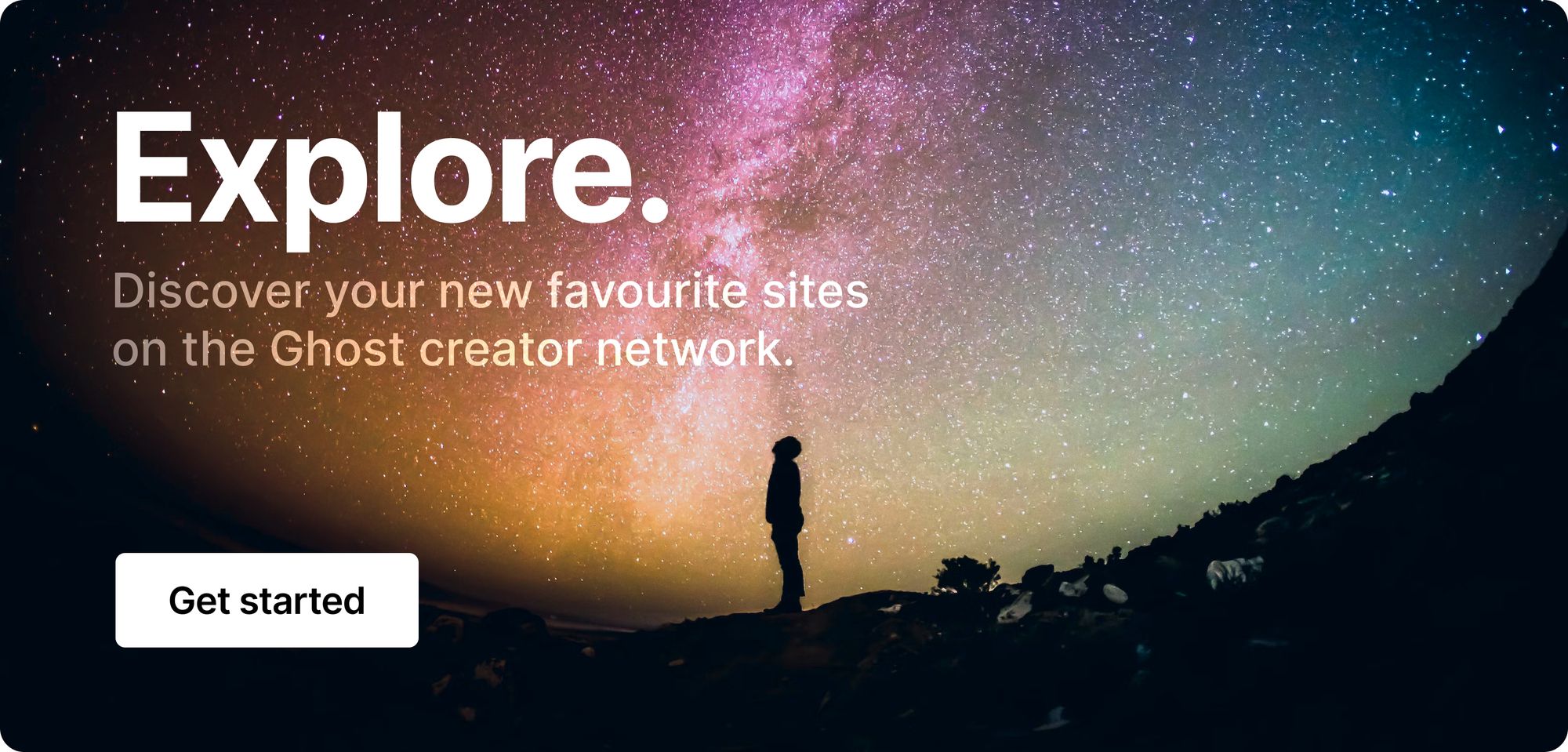⛵️ Setting sail with sponsorships
When you've poured your heart and soul into your newsletter, you want it to stick around as long as possible. To secure a bright future for your hard work, it might be time to start thinking about monetization, specifically email newsletter sponsorships. This week's newsletter is all about how to nab your first paid sponsorship, treating your sponsors with care, and connecting with sponsors who click. Let's go!
In this week's issue 📨
- Paid sponsorships for your email newsletter
- Set your sponsors up for success
- Find your ideal sponsor
Was this email forwarded to you? Subscribe here!
A word from your sponsors

You've narrowed down your newsletter topic, grown your initial audience, and found a creative rhythm with your work. Now what? Time to monetize through email newsletter sponsorships! This type of monetization allows you to keep your content publicly available, build industry relationships, have more financial control, and offer excellent advertising flexibility.
So, what do you need to know, and how do you stand out to secure your first sponsor? We're here to walk you through the different types of sponsored content, the available pricing models, creating a sponsorship page, attracting sponsors, and where to find them.

Step 1: Choose your sponsored content type
- Classifieds are typically a 1-2 sentence block of text containing a single, trackable link to the sponsor’s product. You can easily include multiple classifieds in the same newsletter, but they also cost less since advertisers expect to appear alongside several others.
- Shoutouts are multi-paragraph blocks near the middle of the newsletter that can include multiple links and formats to stand out. You can charge more for shoutouts, but be sure that they don't disrupt the reader experience. Try to include only one shoutout per issue.
- Deep dives allow a single company or product to take over most or all of your newsletter’s content, combining your voice with theirs. Deep dives can become a significant revenue source but can affect your audience's trust if you use them too frequently.
Step 2: Decide how much to charge your sponsors
- When deciding on a pricing model, keep it simple; don't be afraid to price higher than you think, and increase your prices as you grow.
- For smaller publications with under 1,000 subscribers, you can start with $15 for a classified, $50 for a shoutout, and $200 for a deep dive.
- For larger publications with over 1,000 subscribers, consider the CPO (cost per open) model. For example, $50 per 1,000 opens.

Step 3: Create a dedicated sponsorship page
- Build a sponsorship page that not only shows potential sponsors you're worth it but also shows off who already knows you are. Setting the right expectations makes it easier for them to commit financially.
- When pitching yourself to inquiring advertisers, include your audience size, engagement, and demographics. List the type of sponsorships available and their price. Don't forget your contact info!
- Make potential sponsors feel confident by including numerous figures, examples of past sponsors, and details on placement. Check out Troy Hunt's sponsorship page for a great example of this.
Step 4: Set your sponsorship standards
- Does your sponsor align with your interests? The quickest way to erode your audience’s trust is to bombard them with irrelevant promotions. Make sure your sponsored content meets real needs.
- Is there a possibility of an ongoing relationship? Sponsorship revenue may not always be consistent, so partnering with advertisers who will become repeat customers is essential to build trust.
- Have they sponsored other newsletters? As you pursue your first sponsors, it's best to connect with companies familiar with the medium and know what to expect.
- Are they able to meet your budget? Offering deep discounts upfront will lead your sponsors to expect lower prices in the future. Stick to your pricing and work with sponsors who believe in your product.
Step 5: Contact your first potential sponsor
- Locating potential sponsors can be time-consuming, but some networks like Paved, Sponsorgap, and Who Sponsors Stuff can help you connect with the right one.
- Start with one of the free platforms and reach out to a handful of potential sponsors. You can then expand to additional platforms after you’ve signed your first sponsorship deal.
- Reaching out to potential sponsors can be intimidating, so remember that many of them are creators just like you. Remind yourself that by partnering together, everyone can win!
Interesting stories & ideas 📚
- Unfolding the OpenAI crisis – The Guardian
- Gen Z fuels Screenshot Media – Future News & Media
- Harnessing Black technology and media – Free Press
- The longer I do this, the less I care – Ryan Holiday
- What's your definition of great content? – contentfolks
Sponsors beware

When deciding if newsletter sponsorships are the right move for your publication, you are rightfully very "me" focused. You've asked yourself all of the right questions, you've polished your pricing strategy, and you're ready to show potential sponsors how great you are. But before you invite new guests into your home, what have you done to make them feel welcome? What will your potential sponsor's true first impression of you be?
Olly Meakings, product and marketing co-founder of Senja, shares how to avoid the common pitfalls he's experienced when sponsoring email newsletters.
#1 No sponsorship page - Many clients don't have a sponsorship page before reaching out to their first potential sponsor. Make this first!
#2 No testimonials - Advertise who sponsors you now, who's sponsored you before, and who's successfully sponsored you multiple times.
#3 No creative guidance - Help guide your sponsor by sharing the heartbeat of your audience. Start with sharing some previous ads that performed well.
#4 No tracking - Always suggest a tracking link using tools like Google Analytics so you and your sponsor can track your campaign's performance.
#5 No ongoing relationships - Don't just sell yourself as a one-off. Guide your sponsors to buy recurring slots to create lasting relationships.
#6 No context - Ads sold without endorsement, authority, or context are easily skipped. Make sure your sponsorships make sense and have heft.
#7 No authority - If you don't have a solid relationship with your audience, they're less likely to click on an ad. Build trust first.
#8 No reporting - Forward a copy of the sponsored newsletter to your sponsor and share post-campaign reporting to keep them in the loop.
#9 No follow-up - After a campaign, follow up with your sponsor to discuss the next steps in your relationship and request a testimonial.
#10 No drive - You may think your newsletter is the best in the world, but if you want to be taken seriously, you must get serious and follow through!

The perfect sponsor

We believe the perfect sponsor for your email newsletter represents your values and understands your audience. To pick out a sponsor with these qualities, you must know your own values and recognize what your followers will click on. Audience clicks equal audience trust, so how do you find sponsors you align with?
SponsorLeads expands on choosing the right sponsor for your newsletter to ensure exciting partnerships and a pleasant reader experience.
‣ Understand your audience when beginning your search for the right sponsor. You can analyze your subscribers' demographics, interests, and behaviors to identify the products and services most appealing to them. Knowing your audience can better connect potential sponsors with your subscribers' needs and preferences.
‣ Conduct thorough research on companies that share your follower's interests and values. Seek sponsors that provide products or services that complement your content and can provide value to your readers. Tools like SponsorLeads can assist you in finding potential sponsors, and apps like Sponsy can help you manage your existing sponsors.
‣ Research their reputation and gauge their reliability before partnering with a sponsor. You can do this by reading customer reviews, checking for controversies, and verifying their credibility within the industry. Collaborating with a reputable sponsor will enhance your newsletter's credibility and build trust with your audience.
‣ Carefully examine your sponsorship agreement, including payment structure, duration, and promotional requirements. Make sure that the terms are reasonable and mutually beneficial. Remember that a prosperous partnership should benefit both you and the sponsor. If your values don't align, it's okay to let them down gently and move on.
‣ Consider starting with a trial campaign with any potential sponsors to measure the success of your partnership. Monitor essential metrics such as click-through rates, conversions, and reader feedback to evaluate the sponsor's performance. You can also use this data to improve your tactics for future sponsorships.
Curator's pick ✍️

Enjoy this newsletter? Forward to a friend or hit reply to share your thoughts. We don't bite! 👻
Want more how-tos? Search our library of tutorials and subscribe to our monthly "Build with Ghost" newsletter.
Join our Ghost Creator Community! Connect with like-minded people who create content professionally — apply here.






